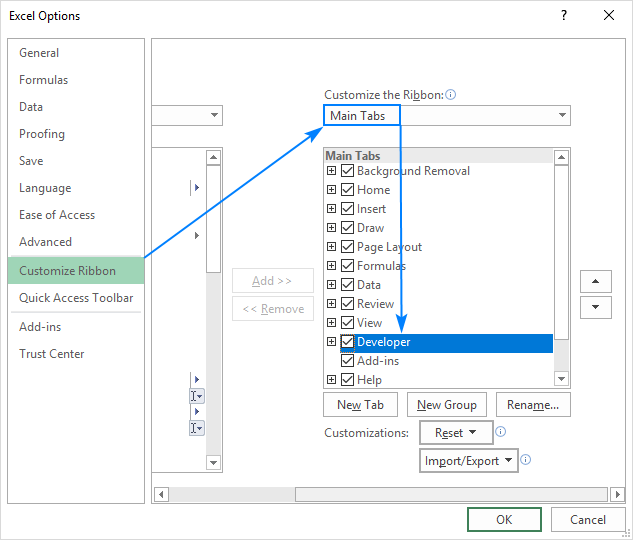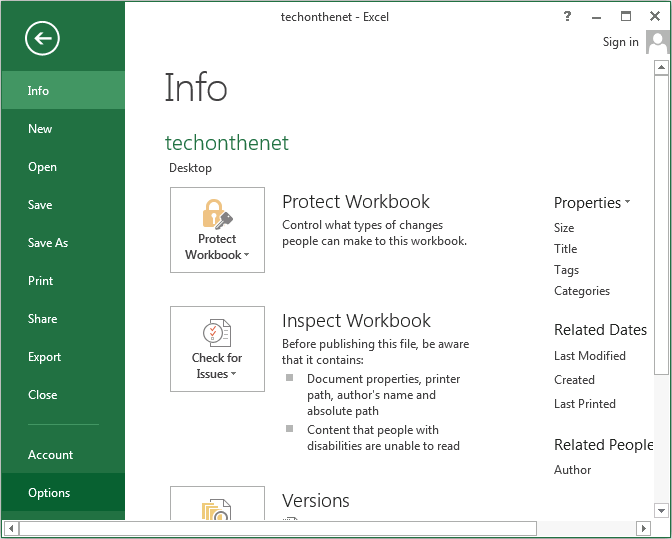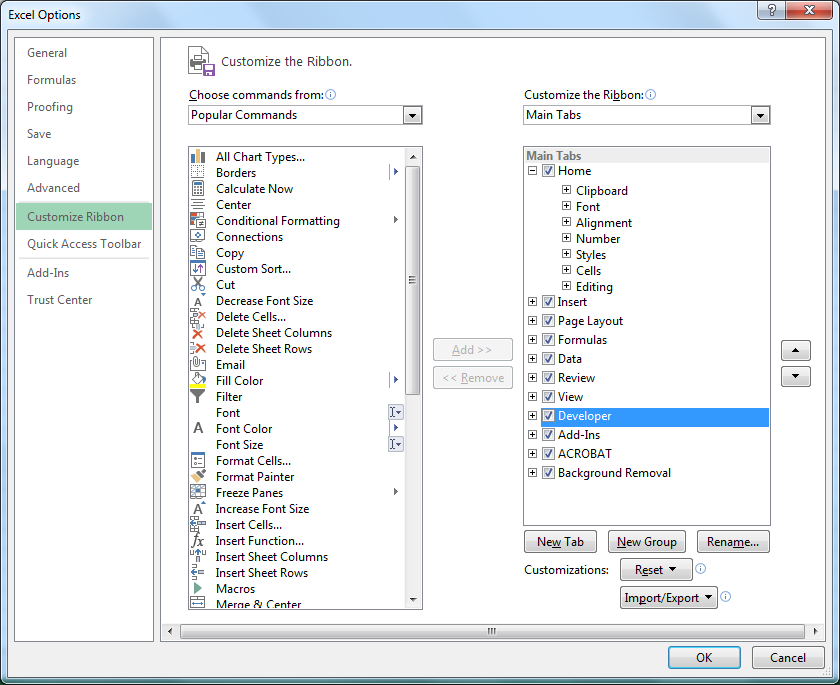
- #ADD DEVELOPER TAB EXCEL 2013 HOW TO#
- #ADD DEVELOPER TAB EXCEL 2013 CODE#
- #ADD DEVELOPER TAB EXCEL 2013 PROFESSIONAL#
Work with the ShapeSheet in Microsoft Visio.Ĭreate new shapes and stencils in Microsoft Visio.

The Developer tab is the place to go when you want to do or use the following:Ĭreate applications to use with Microsoft Office programs. Under Customize the Ribbon and under Main Tabs, select the Developer check box.Īfter you show the tab, the Developer tab stays visible, unless you clear the check box or have to reinstall a Microsoft Office program.
#ADD DEVELOPER TAB EXCEL 2013 HOW TO#
On the File tab, go to Options > Customize Ribbon. How to add Developer Tab into Excel 20 Ribbon: Click the File tab Click the Options at the left to enter into Excel Option window Click the Customize Ribbon at the left At the right, select the Main Tabs from Customize The Ribbon drop down box Check the Developer item Click the OK button to finish customizing. The Developer tab isn't displayed by default, but you can add it to the ribbon.
#ADD DEVELOPER TAB EXCEL 2013 PROFESSIONAL#
This just scratches the surface on what you can learn in Microsoft Excel! We offer multiple courses in Excel, from beginner introductions to Excel to advanced classes, to classes on Pivot Tables and more.Excel for Microsoft 365 Outlook for Microsoft 365 PowerPoint for Microsoft 365 Visio Plan 2 Excel 2021 Outlook 2021 PowerPoint 2021 Visio Professional 2021 Visio Standard 2021 Excel 2019 Outlook 2019 PowerPoint 2019 Visio Professional 2019 Visio Standard 2019 Excel 2016 Outlook 2016 PowerPoint 2016 Visio Professional 2016 Visio Standard 2016 Excel 2013 Outlook 2013 PowerPoint 2013 Visio Professional 2013 Visio 2013 Excel 2010 Outlook 2010 PowerPoint 2010 Visio 2010 Visio Standard 2010 More. Microassist’s lead instructor, Andy Weaver, talks about absolute and relative references in this virtual class. To schedule a group class to learn VBA, please contact our Training Coordinator. This course is intended for advanced Microsoft Excel professionals that need to automate Excel spreadsheet tasks using Visual Basic for Applications (VBA). To really become an expert at macros, you should also have a firm understanding of VBA. The basis of a macro is Visual Basic for Applications (VBA), which is the programming language for Office applications such as Excel. While you may want to start with simple examples, macros can get incredibly complex. Learn VBA to Become an Expert at Creating Excel Macros NOTE: We used Word 2013 to illustrate this feature, but the Developer tab is available in Word, Excel, PowerPoint, Outlook, and Publisher and is activated in the same way.
#ADD DEVELOPER TAB EXCEL 2013 CODE#
When you’re done, press Stop Recording button in the Code group on the Developer tab OR click the blue square in the lower-left corner of the Excel window.Ĭongratulations! You’ve just learned how to create an Excel macro! I recommend starting with a few simple actions such as adjusting the font style or changing the color of the cell so you can get the feel for how it works. The macro recording has begun, and now it’s time to perform the actions you want to record.


From the dialogue box, click on Customize Ribbon on the left side.

Once you’ve added the Developer tab, follow these steps to create an Excel macro: In the section labelled 'Top options for working with Excel' check the box for 'Show Developer tab in the Ribbon': In Excel 2010 to 2016 and greater, click the File menu then select Options. Check out our blog on How to Add and Remove Tabs from the Office 2013 Ribbon to learn how. To get started with creating macros, you’ll first want to add the Developer tab to your ribbon. Excel’s Record Macro dialog box with sample selections.


 0 kommentar(er)
0 kommentar(er)
